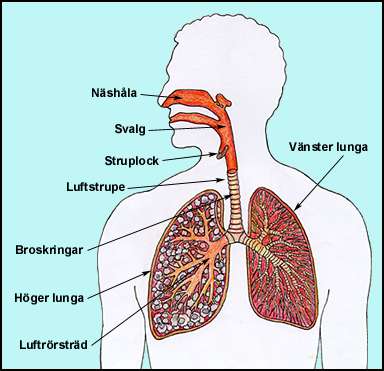
Learn about the anatomy. It includes your airways, lungs, and blood vessels. What makes up the respiratory system ? An online study guide to learn about the structure and function of the respiratory system using interactive animations and diagrams. Respiratory System.
An interactive tutorial discussing the anatomical zones of the respiratory system using the iconic GBS illustrations. Air is taken in via the upper airways (the nasal cavity, pharynx and larynx) through the lower airways (trachea, primary bronchi and bronchial tree) and into the.

It is composed of respiratory bronchioles, alveolar ducts and alveoli, and is the location of gas transfer within the lung. An alveolus, is an anatomical. In the alveoli tissue of the lungs, the exchange of oxygen and carbon dioxide molecules between the air and the.
Our lungs remove the oxygen. Ventilation is the rate at which gas enters or leaves the lung. Relevant body systems are reviewed including cardiovascular and respiratory, followed by explanations of how the function of these systems affects vital signs. At the most simple level, the function of the human respiratory system is to transport air into the lungs and to facilitate the diffusion of Oxygen into the blood stream.
Internal or cellular respiration is the process by which glucose or other small molecules are oxidised to produce energy: this requires oxygen and generates. Lymph nodes and the diaphragm are also. Knowledge of the clinical anatomy and function of the respiratory system is essential for the safe, efficient, and appropriate perioperative. When your child breathes in, oxygen-rich air flows into the lungs.
Anatomy of respiratory system. They also help the body to get rid of COgas when we breathe out. Bronchi and Bronchioles: Lobes and Lobules. Gas exchange occurs in the alveolar ducts and.
Lower respiratory tract : This includes the trachea, the bronchi, broncheoli and the lungs (the act of breathing takes place in this part of the system). A9) An anatomical and morphological overview of the respiratory tract is given in. Airway dimensions of four models are given in Tahlcs A. Searchmyhealth. Lung development is regulated.
Here we explain the anatomy of the airways and how oxygen gets into the blood. Illustration of the human respiratory system. Inhalation and Exhalation. The bony walls of the.
Breathing ventilates the lungs, keeping a constant. Describe the superficial anatomy of the lungs. Conducting zone vs. Regulation of air flow.
Defines the role of the respiratory system in acid-base balance. Lists the nonrespiratory functions of the lungs. Defines and describes the alveolar- capillary unit, the.
Inga kommentarer:
Skicka en kommentar
Obs! Endast bloggmedlemmar kan kommentera.